#and it was jinro like girl this is literally so available at any liquor story oh my god
Explore tagged Tumblr posts
Text
We fucking hate NYC I met a very nice young woman who told me my $6 liquor store soju wasn’t the same quality as the one she paid $20 for at the bar and I was like you’re right because liquor store soju was actually flavored vs the plain soju she had
#she did say she’d check it out next time she was in Jersey tho I wish her all the best in the world she was so nice#and it was jinro like girl this is literally so available at any liquor story oh my god#I was too busy pretending to kiss the feet of a different girl who said I was too soft for NYC to really sell the point home tho#she said you talk like someone who wants to be taken advantage of and I was like um yes and no#I said ma’am please teach me your ways and then leaned into my friend and said maybe too loudly “oh my god I don’t like this girl”#and then she went home with the most generic white dude ever like whoa#who knew freedom would be so basally genetic and easy to obtain
13 notes
·
View notes
Link
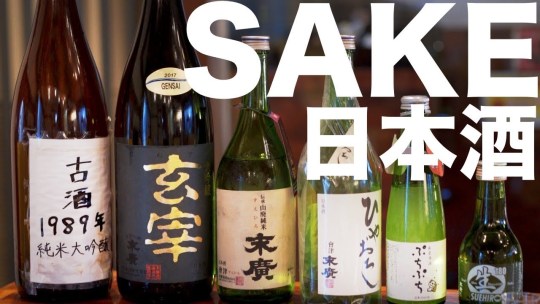


Archaeologists granted access to Japan's sacred tombs
“The opaque bureaucracy that runs the affairs of the imperial family - is unlikely to shed new light on the origins of what some believe is the world's oldest monarchy, for Japan's increasingly vocal ultra-right, even this modest concession is a step too far. They subscribe to the ancient myth that holds that Japan's emperors are the direct descendants of the sun goddess Amaterasu Omikami, and that the current monarch is the latest in an unbroken line of 125 emperors stretching back more than 2,600 years to Jimmu in the seventh century BC.”

“Although the wartime emperor, Hirohito, renounced his divine status after Japan's defeat in 1945, ultra-nationalists regard his son, the current emperor, Akihito, as a living god, and have issued death threats to archaeologists involved in previous attempts to gain access to the tombs.Their greatest fear is that proper inspections of the tombs will reveal compelling evidence that the Japanese imperial family originated from China and the Korean peninsula.”

“Akihito alluded to his Korean ancestry on his 68th birthday in 2001. In remarks that were ignored or played down by most of the domestic media, he said: "I for my part, feel a certain kinship with Korea, given the fact that it is recorded in the Chronicles of Japan that the mother of Emperor Kammu was of the line of King Muryong of Paekche."Kammu reigned from 781 to 806 AD while Muryong ruled the Paekche kingdom in Korea from 501 to 523 AD.”
(via Archaeologists granted access to Japan's sacred tombs | The Guardian)
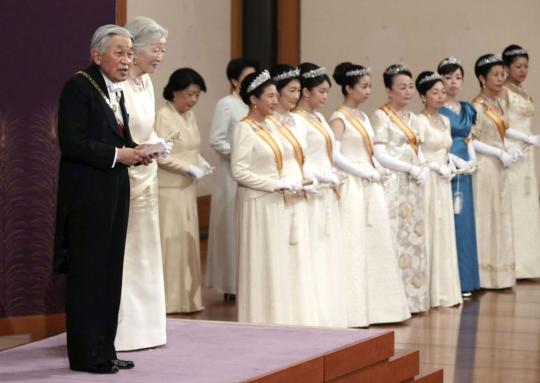
Giru of Paekche
“Giru of Baekje ( 기루왕 ; died 128, r. 77–128) was the third king of Baekje, one of the Three Kingdoms of Korea.”
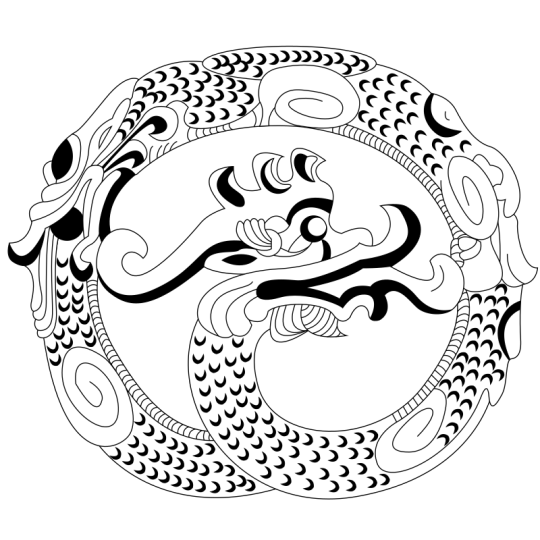
Muryong of Paekche
“Muryeong of Baekje (462–523, r. 501–23) was the 25th king of Baekje, one of the Three Kingdoms of Korea...According to the Shoku Nihongi, Emperor Kanmu's mother, Takano no Niigasa is a descendant of Prince Junda, son of Muryeong, who died in Japan in 513 (Nihon Shoki Chapter 17).”
Emperor Kanmu
“Emperor Kanmu (桓武天皇 Kanmu-tennō, 735– 9 April 806) was the 50th emperor of Japan, according to the traditional order of succession. Kanmu reigned from 781 to 806... According to the Shoku Nihongi (続日本紀), Yamabe's mother, Yamato no Niigasa (later called Takano no Niigasa), was a 10th generation descendant of Muryeong of Baekje.”

Kanpai! Sake through the ages
“The notable event of that time was the Kenmu Restoration, a doomed attempt by Emperor Go-Daigo in Kyoto, the ancient capital, to wrest real, as opposed to merely ceremonial, power from the Shogunate — the regime of military “eastern barbarians” in Kamakura.”

“Most amazing were the aspects of these men’s parties and meetings! In offering wine, they made no distinction of degree between the high and the low. Likewise, men cast off their caps and loosened their top hair, while monks showed their persons in white undergarments without their gowns. The wine was served by more than 20 maidens of 16 or 17 years, clear-skinned and superior in face and figure, through whose unlined robes of raw silk the snowy skin gleamed fresh as lotus blossoms...The guests sported and danced and recited verses. Yet all the while they took counsel together, how they might strike down the eastern barbarians.”

”‘There came over (to Japan)…a man who knew how to distil liquor,” another eighth-century chronicle, the “Kojiki,” tells us. The man was a Korean, Susukori by name.“So this Susukori distilled some great august liquor, and presented it to the heavenly sovereign” — the Emperor Ojin, roughly datable to the fourth century A.D.
Not much is known of Emperor Ojin (he is vaguely associated with an invasion of Korea), but evidently he knew how to enjoy himself. The “Nihon Shoki” records a subject people known as the Kuzu, mountain folk of the remote Kii Peninsula, coming to Ojin’s court to present “thick sake” and singing, “We have brewed the fine great liquor:/ See how good it is — / Come, partake, down it with joy,/ Our father.”
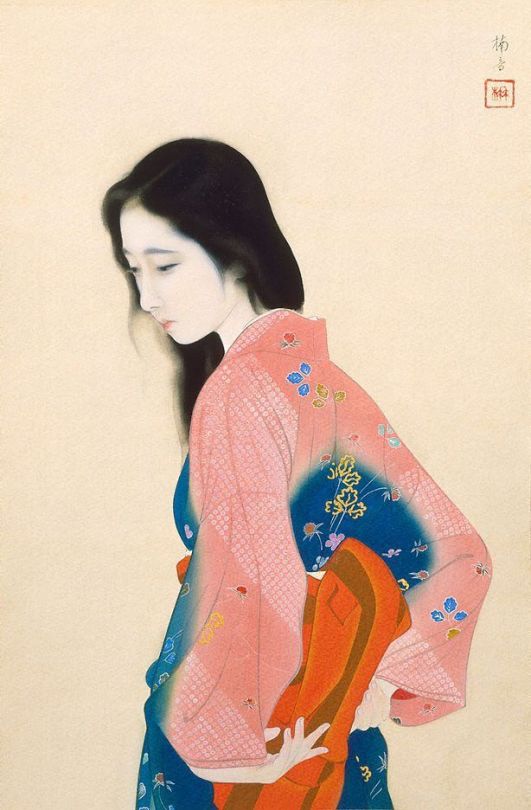
“The earliest sake was termed kuchikami no sake — literally, “chewing-in-the-mouth sake.” “This sake...was made by chewing rice, chestnuts or millet and then spitting the wad into a large wooden tub where it was allowed to brew for several days...only young virgins were allowed to chew the rice. These virgins were considered mediums of the gods, and the sake they produced was called bijinshu, or ‘beautiful woman sake.’ ” Refinement proceeded slowly, over centuries. Thick sake grew thinner, ultimately turning liquid. Black sake grew white and finally transparent.”
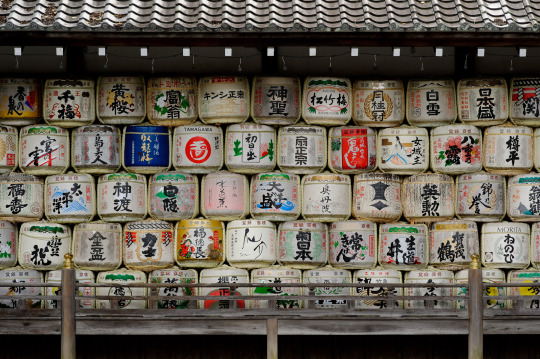
”Sake-brewing was Japan’s first commercial enterprise. Associated both in Heian times and before exclusively with shrine and court, it passed into entrepreneurial hands in the early years of the Kamakura Shogunate (1192-1333). That period is known mainly for inaugurating Japan’s stern military tradition, but it has another claim to fame: Its stable currency fostered a commercial spirit.”

“Descendants of the families that had run the sake brewery of the court...now sought permission from the new government to establish themselves as independent brewers, or formed guilds associating themselves with powerful temples and shrines and going into business under their protection.”
Fortunes were made. Warriors were not supposed to be drinkers, but they proved open to temptation after all. Kyoto culture, despised in the Kamakura Shogunate’s early years as effete, gradually took hold. Battle-hardened samurai became Kyotoized in spite of themselves. By the 14th century...there were 342 sake brewers in Kyoto alone, Kamakura being a prime market.”
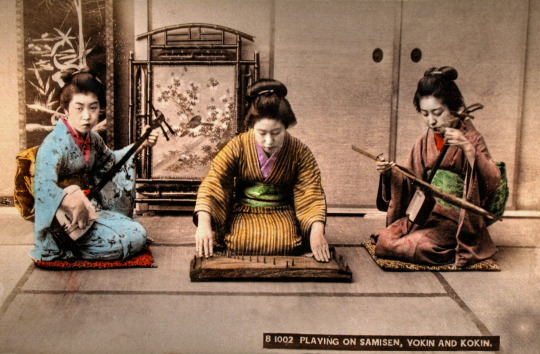
“The hostess and maids of the house receive you very hospitably and lead you to a room upstairs...Everything in the room makes you comfortable. A clever-looking maid comes up with a tea-set and serves tea and cakes, then asks you whether you want to take sake and some dishes, hire geisha and jesters...In another room the samisen is heard...Lots of sake and good food produce in the guest an amorous nature.
At the gate of a tea house...stood the funny but inevitable little Japanese girls, gaily bowing and smirking...asking the ‘honorable’ gentlemen to come in and rest and laugh and chaff with them and take just one cup of their ‘honorable’ tea. Tea in a modern Japanese tea house in these days of civilization means, I fear, whisky with or without water...Peach blossoms may surround it (the tea house), but the almond-eyed maidens are employed here to tempt the traveler to drink and romp.”
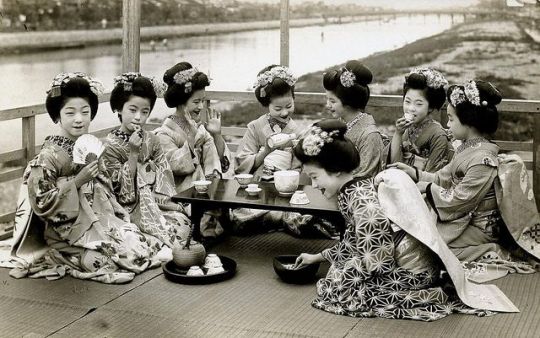
“For 1,000 years and more, “drinking” in Japan meant, almost exclusively, but not quite, drinking sake. The exception was shōchū...And so in the popular imagination if not quite in actual fact, “drinking” and “sake” were synonymous — until Japan’s mid-19th century opening to the West...What is indisputable is that the “soothing liquor, smiling liquor” celebrated all those misty ages ago by Emperor Ojin has been in sad popular decline ever since, though it’s said very lately to be on the cusp of a revival...businessmen were as likely to be drinking beer, wine or whisky as sake ”
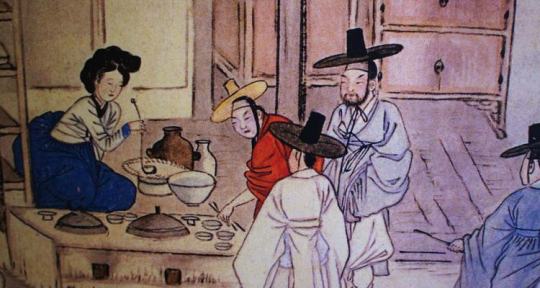
Soju: the most popular booze in the world
“There's a brand of one particular spirit that sells more than twice as much as any other in the world...soju, national hooch of South Korea. Jinro Soju – available at Waitrose and Amazon – has topped Drinks International's annual list of best-selling global spirits for years.
Soju now sells in 80 countries, with a rising profile helped by Korean superstar Psy, who not only proclaimed soju his "best friend" but also lent his dark-glassed visage to various campaigns to get the rest of the world smitten too. K-Pop K-Shot" billboards sprouted across America, showing Psy clutching a bottle of Chamisul soju (available via Beers of Europe).”

“In a country with the world's highest per capita alcohol consumption...soju takes a whopping 97% of the spirits market. But this is a drink embedded in Korean culture since the 14th century, when Mongol invaders taught the locals how to distill, with fermented rice as the traditional starter.”
(via Soju: the most popular booze in the world | The Guardian)


The Story Behind Kirin Beer Labels
“The kirin depicted on Kirin Beer labels is a legendary creature derived from ancient Chinese myths and is said to be a harbinger of good luck...When Kirin Beer first came out in 1888, beers imported to Japan had labels that featured animals such as cats and goats. Japan Brewery Co., Ltd.—the forerunner of Kirin Brewery—chose also to use an animal as the central theme for its beer label.
A close-up of Kirin Beer labels from 1933 to the present day reveals that the three tiny Japanese kana letters for "ki," "ri" and "n" are embedded in the mane of the kirin depicted in these labels. We do not know exactly why this started: Some say the graphic designer who created the original 1933 label may have simply added an amusing touch to the design, while others claim it was an attempt to prevent forgery of the labels.
(via The Story Behind Kirin Beer Labels | Kirin)
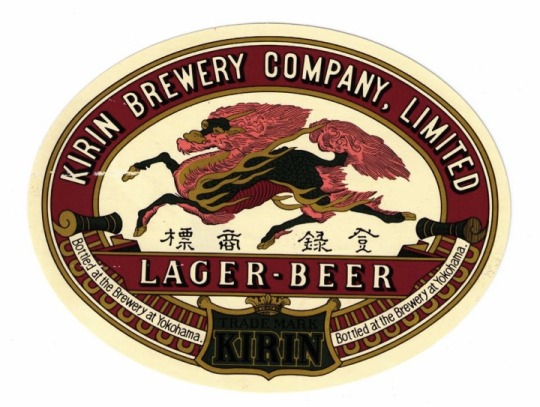
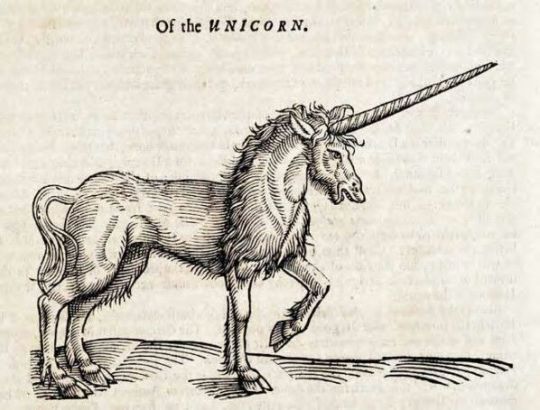
Kiringul
“Kiringul (Korean: 기린굴; "Kirin's Grotto") is a cave in North Korea said to have been the home of the kirin, a mythological chimeric beast that was reputedly ridden by King Dongmyeong of Goguryeo in the 1st century BC...kirin (or qilin), a mythological chimera-like beast with "the body of a deer, the tail of a cow, hooves and a mane", as well as a single horn on its head. The creature was said to have been King Dongmyeong's favourite means of transport. The place in question is called Kiringul or "Kirin's Grotto". Despite the name, it was not literally supposed to have been a place where kirins lived, but was instead a mythical name akin to the Giant's Causeway in Northern Ireland.”
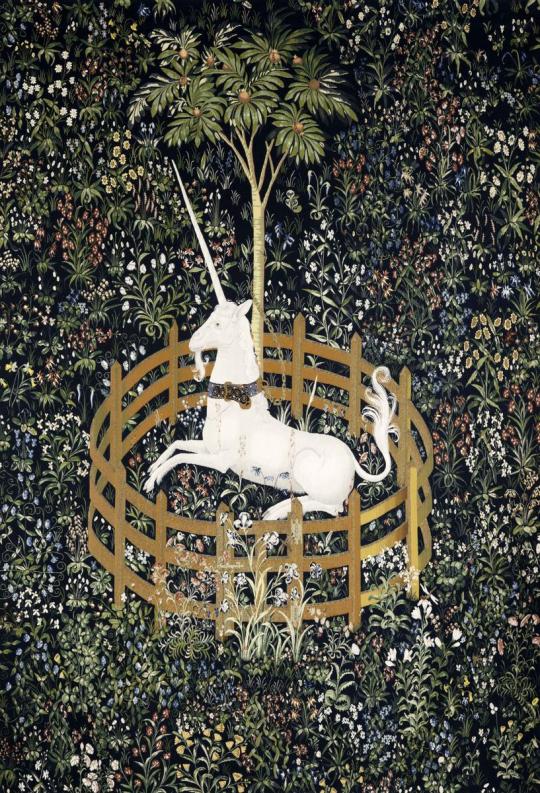
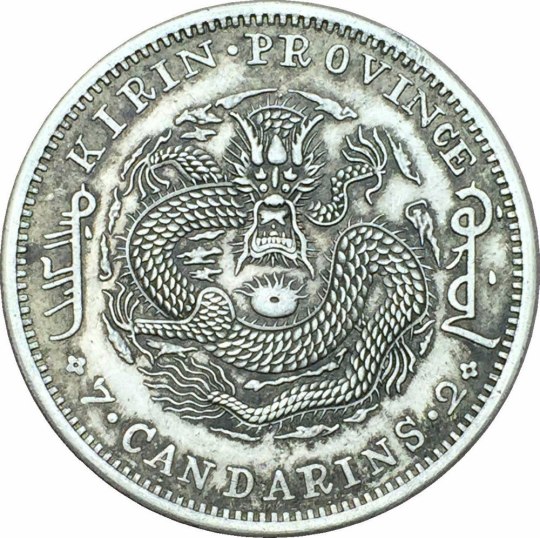
Coin from Kirin Province, Manchuria (1901)
Jilin
“Jilin (吉林; 기린; formerly romanised as Kirin)...The name "Jilin" – which literally translates to "Auspicious Forest" – originates from girin ula ᡤᡳᡵᡳᠨ ᡠᠯᠠ, a Manchu phrase meaning "along the river". This would have been transcribed into jilin wula (t 吉林烏拉, s 吉林乌拉) in Chinese, then shortened to "Jilin."


Anti-Manchuism
“In 1911 Xinhai revolutionaries proclaimed that Han and Muslims were equal, but deliberately left out the Manchus in the original proclamation, and thus "can be seen as sanctioning" the massacre of Manchus in Xi'an.[1] The Muslims, led by Ma Anliang and Ma Qi proceeded to ignore the proclamation, and continued to fight for Qing against the revolutionaries. After the Manchu men in Xi'an were all killed, the Chinese Muslims rescued attractive Manchu girls and converted them into Muslims.”

How Beijing Turned Koreans Into Chinese
“Of the approximately two million Chinese Koreans living in China, about half reside in Jilin Province, one of the country’s three northeastern provinces...Given such a strong Korean influence on the region, it may seem logical that of Jilin’s ethnic Korean population many (if not most) would identify with one or both of the Koreas...to the youngest generation. For them, the contemporary connection with South Korea is little more than functional, while that with North Korea barely exists at all.
Having grown up in the era of China’s rise, at a time when the Chinese Communist Party (CCP) has shown very little practical interest in the preservation of ethnic minority cultures and devoted a great deal of attention to forging some kind of “unified” Chinese identity, today’s youth of Yanbian identify as resolutely Chinese.”
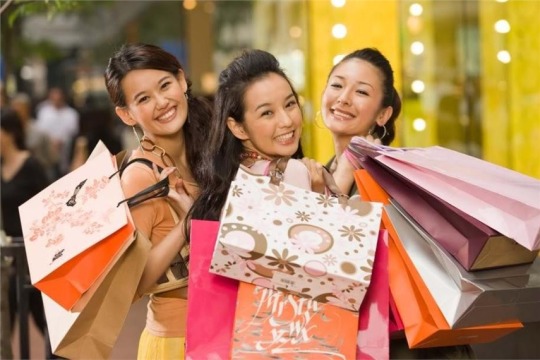
“The government was in no mood to let a surfeit of independent spirit get in the way of the country’s trajectory, and this — coupled with the disintegration of the Soviet Union — necessitated a recalibration of national policy toward ethnic minority education. The impact was readily felt. In 1990 there were 1,106 Korean elementary schools in the Yanbian autonomous region, but this was down to just 138 by 1999 and 31 another decade after that...The same pattern has been repeated — and amplified — elsewhere in Jilin. In 1991, 26 Korean middle schools were in Liuhe County, an administrative district of the industrial city of Tonghua in the west of the province, but by 2011 there remained only one.”

“The reasons for the dominance of Chinese-language education among Chinese Korean youth, a local university professor informed us during our recent visit to the region, are twofold: First, sustained economic growth and development has altered perceptions of the Chinese state and what it means to be Chinese today. While political challenges to the CCP’s right to rule exist, economic opportunity for those who more fully assimilate, reinforced by a sense of pride in being Chinese, means more people (parents prominent among them) are willing to buy in. And second, in part a response to the challenges facing the Party today, the CCP has changed its nation-building strategy. Whereas in the past it was possible to be Chinese and ethnically Korean, today one is expected to be thoroughly Chinese.
Taken together, this provides a powerful explanation for not only the decline of Korean-language education and Korean ethnic consciousness, but also the success of Chinese nation-building.”
(via How Beijing Turned Koreans Into Chinese | The Diplomat)

Ethnic Koreans in China not bound to N.Korea
“China quite possibly fears that some Korean government might one day lay claim to the area that encompasses the Yanbian Autonomous Region (YAR.) Recall that there have always been Koreans there, and the area is now home to an estimated 2 million ethnic Koreans. China has no wish to see an increased sense of nationalism among them. This is a major reason why China does not want defectors from North Korea that might ignite any latent feelings of irredentism and nationalism in the ethnic population of its northeast provinces.
The younger ethnic Koreans in the YAR are undoubtedly aware of the differences between the two countries, and they can easily see that their future is brighter in China than it would be in North Korea...The point here isn’t that ethnic Koreans in China would likely prefer to remain as Chinese citizens in China rather than return to the chaos of North Korea. Ethnic Koreans do indeed know that North Korea is a failed state, that they have far more freedom in China and that they enjoy a better standard of living in the YAR than the average citizen in North Korea.”
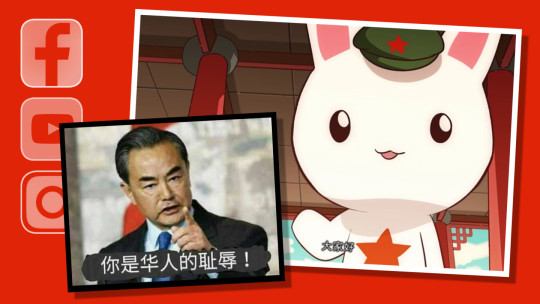
”Many ethnic Koreans in the YAR, in the event of a collapsing North Korea, would likely see excellent opportunities – the real draw being South Korea with its bustling cities, readily available consumer goods of high quality, astonishing personal freedoms – and ways to make money. To be sure, those former “exiles” and their descendants certainly realize that their homeland culture has transformed radically since they were last in Korea.
Nonetheless, culture and heritage are important in Asia and that, along with the shared historical ancestry, could exert a powerful pull, particularly if older generation ethnic Koreans consider returning to the peninsula. If nothing else, ethnic Koreans with their intimate knowledge of China would likely see great opportunities in which they can play significant roles as South Korea grows its trade with its larger neighbor.”
(via Ethnic Koreans in China not bound to N.Korea | NK News)

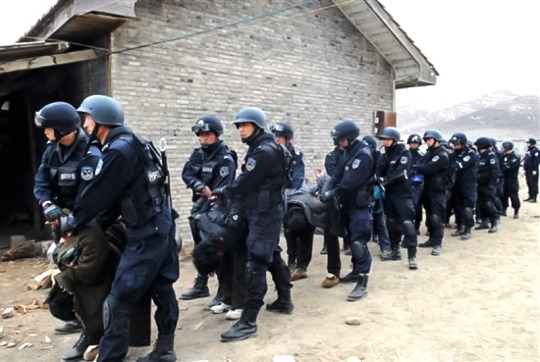
Ethnic cleansing makes a comeback — in China
“Since last year, hundreds of thousands — and perhaps millions — of innocent Uighurs and other ethnic minorities in the Xinjiang region in northwest China have been unjustly arrested and imprisoned in what the Chinese government calls “political re-education camps.” Thousands have disappeared. There are credible reports of torture and death among the prisoners. The government says it is fighting “terrorism” and “religious extremism.” Uighurs say they are resisting a campaign to crush religious and cultural freedom in China. The international community has largely reacted with silence.
Horrific as they are, the camps constitute just one part of Beijing’s effort. The government has destroyed thousands of religious buildings. It has banned long beards and many Muslim names. People are forced to eat pork against their beliefs. The Chinese government’s persecution of innocents continues even after their death. Crematoria are being built to literally extinguish the Uighur funeral tradition, which insists on burials.”

“Add to that the unprecedented security and surveillance state in Xinjiang, which includes all-encompassing monitoring based on identity cards, checkpoints, facial recognition and the collection of DNA from millions of individuals. The authorities feed all this data into an artificial-intelligence machine that rates people’s loyalty to the Communist Party in order to control every aspect of their lives.”
If that doesn’t bother you, consider that this draconian expansion of Chinese repression is being exported to the United States and around the world. Families of U.S. citizens who speak out against Beijing are targeted as part of Beijing’s effort to snuff out all international criticism.”

“Despite Beijing’s efforts, mounting evidence of the camps has managed to make its way to the outside world. Massive camp construction can be seen from satellites, and advertisements for new construction contracts are publicly available. Witnesses have told their stories. Yet the world has failed to respond...The Chinese government is attempting to “Sinocise religion” and “transform religion and ethnicity in Chinese society” in a scheme more ambitious than Mao’s Cultural Revolution...“The scope of this campaign is breathtaking.”
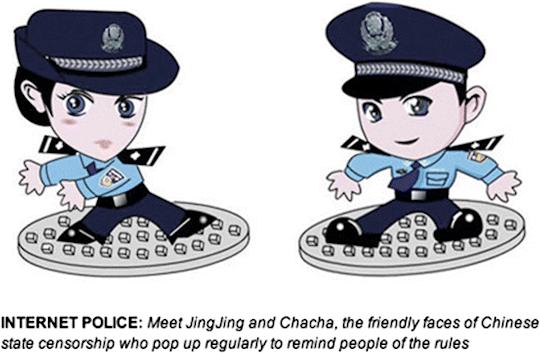
“The Chinese government’s obsession with its international reputation is its main vulnerability. Calling out these atrocities in public and to Beijing directly is key. The horror in Xinjiang is not a China issue, it’s a global issue. China uses its position on the U.N. Human Rights Council and the U.N. Security Council not only to stifle discussion of its actions but also to attempt to rewrite international human rights norms to allow expansion of these practices by any dictatorship with the means.”
(via Ethnic cleansing makes a comeback — in China | The Washington Post)

#nihonshu#kamakurashogunate#kyotoemperor#sake#kiipeninsula#shochu#soju#kpop#kirinbrewery#kirin#kiringul#qilin#unicorn#uighur#manchu#tibetan#korean#ethniccleansing#forcedintermarriage#hanchinesemen#40millionextrachinesemen#worldwidechineseinternetcensorship#communistdictatorship
0 notes